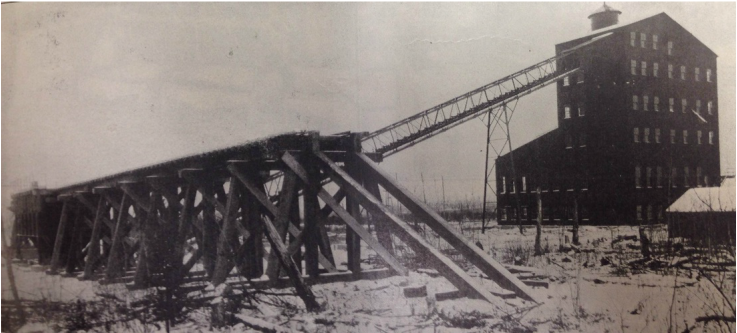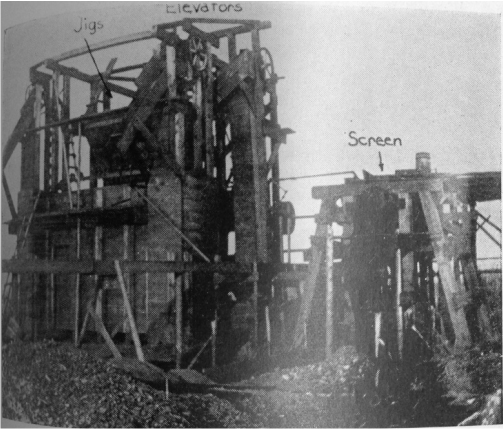|
"The washing of iron ore means more than most people realize...The evolution of the concentrating process has allowed the development of iron-ore deposits that have brought millions to the owners, to the operators and to the public." Nashwauk, MN is located in Itasca Co, within the western branch of the Mesabi Range, a geologic region known historically for its abundance of low-grade, siliceous iron ores. These ores, unlike the direct shipping ores that brought fame and fortune to the Vermillion Range, were encased in the earth like baklava, with thin layers of silica gangue mixed with thin layers of iron ore. Mining engineers and furnace operators found this ore to be irritable, and when fed directly to the blast furnaces it caused a sort of industrial indigestion as the high-silica content in the ore had a tendency to clog-up the furnace's innards. "The Crosby plant, which is typical in size of the others, is a steel structure with dimensions of 62 x 67 ft. and has an extreme height of 81 ft. The machinery is all of Allis-Chalmers manufacture." L.A. Rossman, "Nashwauk Iron-Washing Plants", in Engineering and Mining Journal, Vol. 102, No. 12, Sept. 16, 1916, pp. 491
0 Comments
"But the experiment is being made on a most important scale by men of ample means who usually succeed in what they attempt." (Dwight E. Woodbridge, "Concentration of Mesabi Ores", in The Engineering and Mining Journal, Vol. 77, June 16, 1904, pp. 960-961.) Although the Trout Lake Concentrator was the first full scale, low-grade iron ore concentrator on the Mesabi Range, a handful of experimental (or pilot) plants proceeded it. Mining Companies were well aware of the potentially profitable low-grade iron ore deposits in the western Mesabi starting in the late 1890s, and by the turn of the twentieth century, The Oliver Iron Mining Co. (OIMC) took the first step in making this geologic probability an envirotechnical reality. The Acturus Mine, located roughly a mile northwest of Marble, MN, is where the story of Lake Superior iron ore concentration begins. "The mill building is commodious and the machinery |
AuthorJohn Baeten holds a PhD in Industrial Heritage and Archaeology from Michigan Technological University. His research aims to contextualize the environmental legacies of industrialization as meaningful cultural heritage. Archives
May 2016
Categories
All
|



 RSS Feed
RSS Feed
